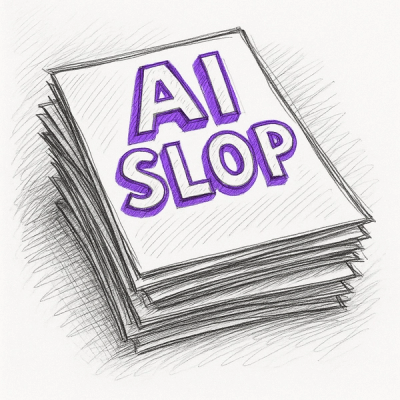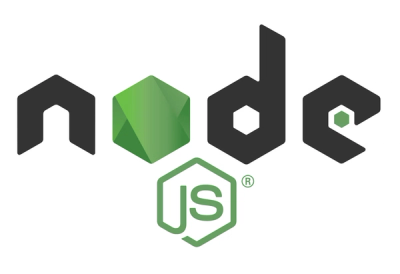
Security News
Django Joins curl in Pushing Back on AI Slop Security Reports
Django has updated its security policies to reject AI-generated vulnerability reports that include fabricated or unverifiable content.
django-tenant-schemas
Advanced tools
|PyPi version| |PyPi downloads| |Python versions| |Travis CI| |PostgreSQL|
This application enables django_ powered websites to have multiple
tenants via PostgreSQL schemas_. A vital feature for every
Software-as-a-Service website.
Django provides currently no simple way to support multiple tenants using the same project instance, even when only the data is different. Because we don't want you running many copies of your project, you'll be able to have:
A schema can be seen as a directory in an operating system, each
directory (schema) with it's own set of files (tables and objects). This
allows the same table name and objects to be used in different schemas
without conflict. For an accurate description on schemas, see
PostgreSQL's official documentation on schemas_.
There are typically three solutions for solving the multitenancy problem.
Isolated Approach: Separate Databases. Each tenant has it's own database.
Semi Isolated Approach: Shared Database, Separate Schemas. One database for all tenants, but one schema per tenant.
Shared Approach: Shared Database, Shared Schema. All tenants share the same database and schema. There is a main tenant-table, where all other tables have a foreign key pointing to.
This application implements the second approach, which in our opinion, represents the ideal compromise between simplicity and performance.
Each solution has it's up and down sides, for a more in-depth
discussion, see Microsoft's excellent article on Multi-Tenant Data Architecture_.
Tenants are identified via their host name (i.e tenant.domain.com). This
information is stored on a table on the public schema. Whenever a
request is made, the host name is used to match a tenant in the
database. If there's a match, the search path is updated to use this
tenant's schema. So from now on all queries will take place at the
tenant's schema. For example, suppose you have a tenant customer at
http://customer.example.com. Any request incoming at
customer.example.com will automatically use customer\ 's schema
and make the tenant available at the request. If no tenant is found, a
404 error is raised. This also means you should have a tenant for your
main domain, typically using the public schema. For more information
please read the setup_ section.
As many tenants as you want
Each tenant has its data on a specific schema. Use a single project
instance to serve as many as you want.
Tenant-specific and shared apps
Tenant-specific apps do not share their data between tenants, but you can also have shared apps where the information is always available and shared between all.
Tenant View-Routing
You can have different views for ``http://customer.example.com/`` and
``http://example.com/``, even though Django only uses the string after
the host name to identify which view to serve.
Magic
~~~~~
Everyone loves magic! You'll be able to have all this barely having to
change your code!
Setup & Documentation
---------------------
**This is just a short setup guide**, it is **strongly** recommended
that you read the complete version at
`django-tenant-schemas.readthedocs.io`_.
Your ``DATABASE_ENGINE`` setting needs to be changed to
.. code-block:: python
DATABASES = {
'default': {
'ENGINE': 'tenant_schemas.postgresql_backend',
# ..
}
}
Add the middleware ``tenant_schemas.middleware.TenantMiddleware`` to the
top of ``MIDDLEWARE_CLASSES``, so that each request can be set to use
the correct schema.
.. code-block:: python
MIDDLEWARE_CLASSES = (
'tenant_schemas.middleware.TenantMiddleware',
#...
)
Add ``tenant_schemas.routers.TenantSyncRouter`` to your `DATABASE_ROUTERS`
setting, so that the correct apps can be synced, depending on what's
being synced (shared or tenant).
.. code-block:: python
DATABASE_ROUTERS = (
'tenant_schemas.routers.TenantSyncRouter',
)
Add ``tenant_schemas`` to your ``INSTALLED_APPS``.
Create your tenant model
.. code-block:: python
from django.db import models
from tenant_schemas.models import TenantMixin
class Client(TenantMixin):
name = models.CharField(max_length=100)
paid_until = models.DateField()
on_trial = models.BooleanField()
created_on = models.DateField(auto_now_add=True)
Define on settings.py which model is your tenant model. Assuming you
created Client inside an app named customers, your
TENANT_MODEL should look like this:
.. code-block:: python
TENANT_MODEL = "customers.Client" # app.Model
Now run migrate_schemas to sync your apps to the public schema.
::
python manage.py migrate_schemas --shared
Create your tenants just like a normal django model. Calling save
will automatically create and sync/migrate the schema.
.. code-block:: python
from customers.models import Client
# create your public tenant
tenant = Client(domain_url='tenant.my-domain.com',
schema_name='tenant1',
name='My First Tenant',
paid_until='2014-12-05',
on_trial=True)
tenant.save()
Any request made to tenant.my-domain.com will now automatically set
your PostgreSQL's search_path to tenant1 and public, making
shared apps available too. This means that any call to the methods
filter, get, save, delete or any other function
involving a database connection will now be done at the tenant's schema,
so you shouldn't need to change anything at your views.
You're all set, but we have left key details outside of this short
tutorial, such as creating the public tenant and configuring shared and
tenant specific apps. Complete instructions can be found at
django-tenant-schemas.readthedocs.io_.
.. _django: https://www.djangoproject.com/ .. _PostgreSQL schemas: http://www.postgresql.org/docs/9.1/static/ddl-schemas.html .. _PostgreSQL's official documentation on schemas: http://www.postgresql.org/docs/9.1/static/ddl-schemas.html .. _Multi-Tenant Data Architecture: https://web.archive.org/web/20170530080303/https://msdn.microsoft.com/en-us/library/aa479086.aspx
.. |PyPi version| image:: https://img.shields.io/pypi/v/django-tenant-schemas.svg :target: https://pypi.python.org/pypi/django-tenant-schemas .. |PyPi downloads| image:: https://img.shields.io/pypi/dm/django-tenant-schemas.svg :target: https://pypi.python.org/pypi/django-tenant-schemas .. |Python versions| image:: https://img.shields.io/pypi/pyversions/django-tenant-schemas.svg .. |Travis CI| image:: https://travis-ci.org/bernardopires/django-tenant-schemas.svg?branch=master :target: https://travis-ci.org/bernardopires/django-tenant-schemas .. |PostgreSQL| image:: https://img.shields.io/badge/PostgreSQL-9.2%2C%209.3%2C%209.4%2C%209.5%2C%209.6-blue.svg .. _setup: https://django-tenant-schemas.readthedocs.io/en/latest/install.html .. _django-tenant-schemas.readthedocs.io: https://django-tenant-schemas.readthedocs.io/en/latest/
FAQs
Tenant support for Django using PostgreSQL schemas.
We found that django-tenant-schemas demonstrated a healthy version release cadence and project activity because the last version was released less than a year ago. It has 2 open source maintainers collaborating on the project.
Did you know?

Socket for GitHub automatically highlights issues in each pull request and monitors the health of all your open source dependencies. Discover the contents of your packages and block harmful activity before you install or update your dependencies.

Security News
Django has updated its security policies to reject AI-generated vulnerability reports that include fabricated or unverifiable content.

Security News
ECMAScript 2025 introduces Iterator Helpers, Set methods, JSON modules, and more in its latest spec update approved by Ecma in June 2025.

Security News
A new Node.js homepage button linking to paid support for EOL versions has sparked a heated discussion among contributors and the wider community.